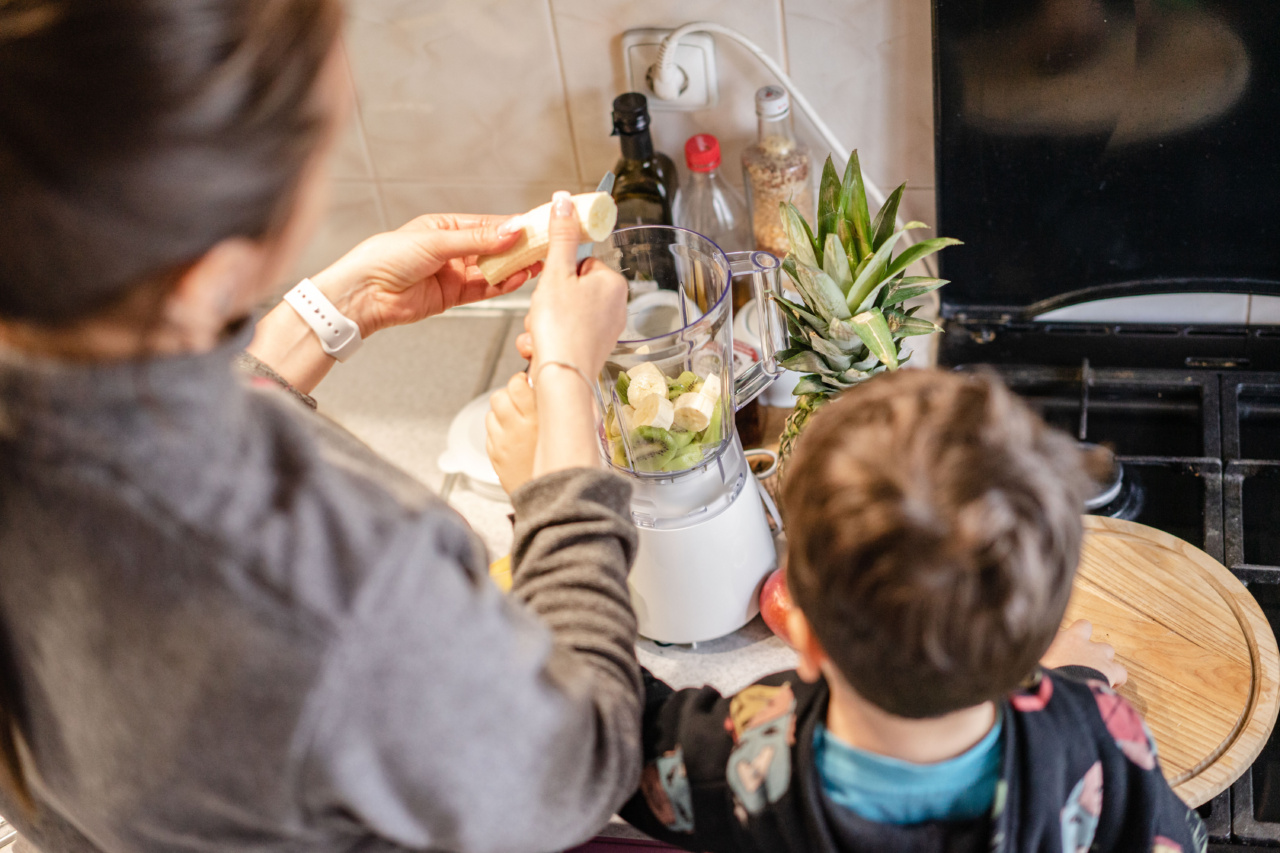Fruit juice is a popular drink among children, as it is sweet and flavorful, and provides the goodness of fruits. However, many parents wonder if giving fruit juice to kids is a healthy choice.
While fruit juice can offer some benefits, it can also have drawbacks if consumed in excess or inappropriately. In this article, we will explore the pros and cons of giving fruit juice to kids, and provide some guidelines for making it a healthy choice.
The Pros of Giving Fruit Juice to Kids
Fruit juice can be a good source of vitamins, minerals, and antioxidants, depending on the type of juice and how it is processed. Here are some of the potential benefits of giving fruit juice to kids:.
1. Hydration
Fruit juice can help keep kids hydrated, especially during warm weather or physical activity. Watermelon, citrus fruits, and berries are some of the fruits with high water content that can be made into refreshing and hydrating juices.
2. Nutrients
Fruit juice can provide some of the essential nutrients that kids need to grow and thrive. For example, orange juice is a good source of vitamin C, which supports the immune system and helps with iron absorption.
Pineapple juice contains bromelain, an enzyme that aids digestion and reduces inflammation. Cranberry juice has antioxidants that may help prevent urinary tract infections.
3. Variety
Fruit juice can add variety and flavor to a child’s diet, especially if they are picky eaters or don’t get enough fruits and vegetables.
Mixing different fruits or adding vegetables like carrots or spinach to a juice can increase its nutrient content and appeal.
The Cons of Giving Fruit Juice to Kids
Despite its potential benefits, fruit juice can also have some drawbacks, especially if consumed in excess or inappropriately. Here are some of the potential risks of giving fruit juice to kids:.
1. Sugar
Many fruit juices are high in sugar, either naturally or from added sugars. Excessive sugar consumption can contribute to obesity, tooth decay, and other health problems.
It is recommended to limit fruit juice intake to no more than 4 ounces per day for children 1-3 years old, and no more than 6-8 ounces per day for children 4-6 years old.
2. Calories
Fruit juice can be high in calories, especially if consumed in large amounts or with added sweeteners. A cup of apple juice, for example, has about 120 calories, while a cup of grape juice has about 150 calories.
Drinking too much fruit juice can increase the risk of weight gain and related health issues, such as diabetes and heart disease.
3. Lack of Fiber
Fruit juice lacks the fiber that whole fruits have, which helps regulate digestion, blood sugar, and cholesterol levels.
Without fiber, fruit juice can cause blood sugar spikes and cravings, and may not provide the same satiety and health benefits as whole fruits.
How to Make Fruit Juice a Healthy Choice for Kids
To make fruit juice a healthy choice for kids, here are some tips to follow:.
1. Choose Whole Fruits
The best way to get the nutritional benefits of fruits is to eat them whole, which provides fiber, vitamins, and minerals, as well as a sense of fullness and satisfaction.
Fruit juice should not replace whole fruits in a child’s diet, but rather supplement them as a treat or a source of hydration.
2. Go for Fresh or Frozen
Fresh or frozen fruits are the best options for making fruit juice, as they contain more nutrients and antioxidants than canned or packaged fruits. Fresh fruits should be rinsed thoroughly and peeled or seeded as needed before juicing.
Frozen fruits can be blended with some water or milk to create a refreshing smoothie.
3. Combine with Vegetables or Herbs
Adding vegetables like carrots, beets, spinach, or kale to a fruit juice can increase its nutrient density and add flavor and color. Herbs like mint, basil, or ginger can also add a refreshing twist to a fruit juice and provide some digestive benefits.
4. Dilute with Water
To reduce the sugar and calorie content of fruit juice, it can be diluted with water or sparkling water. This can also make it more hydrating and refreshing, especially during hot weather.
A ratio of 1:1 or 2:1 (water to juice) is recommended for young children.
5. Serve with Meals
Fruit juice should be served as part of a balanced meal or snack, rather than on its own or between meals. This can help prevent blood sugar spikes, provide a range of nutrients, and promote satiety.
It is also a good idea to serve fruit juice in a cup or glass, rather than in a bottle or sippy cup, to avoid overconsumption and tooth decay.
Conclusion
Giving fruit juice to kids can be a healthy choice if done in moderation and with proper attention to its nutritional profile and sugar content.
Fruit juice can provide hydration, vitamins, and variety to a child’s diet, but it can also contribute to excessive sugar consumption, weight gain, and lack of fiber if consumed in excess or inappropriately. To make fruit juice a healthy and enjoyable option for kids, it is important to choose whole fruits, go for fresh or frozen options, combine with vegetables or herbs, dilute with water, and serve with meals.
By following these simple guidelines, parents can help their kids enjoy the goodness of fruit juice while avoiding its potential drawbacks.































